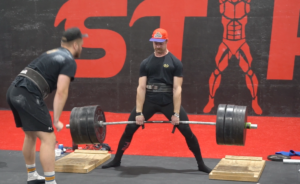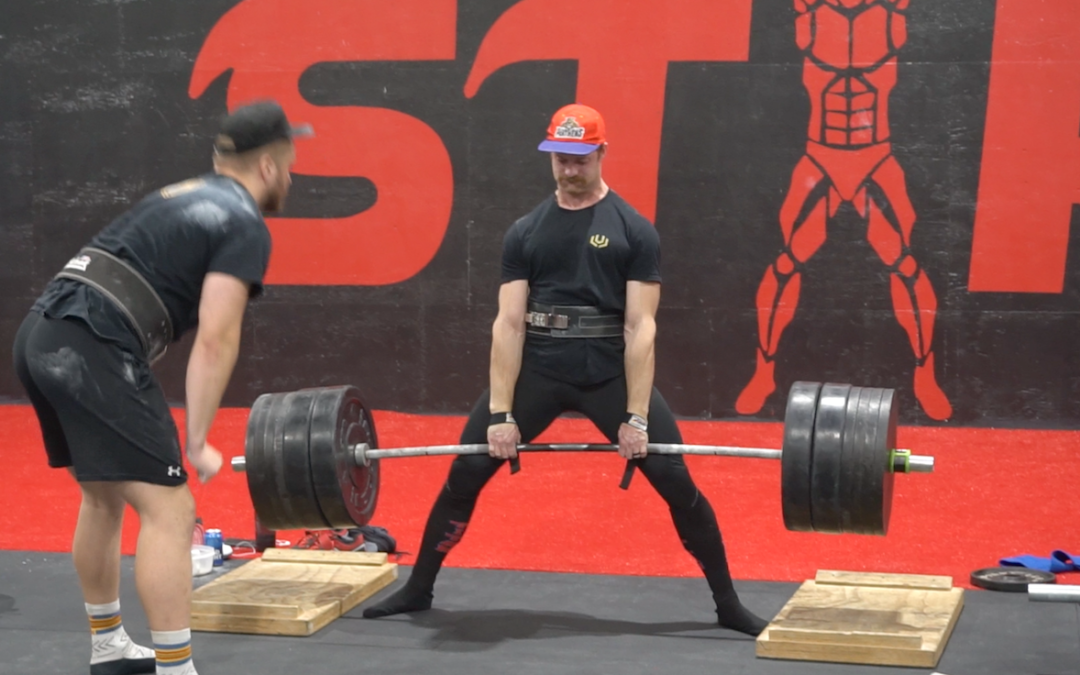
Photo: Kurt Kornelson pulling a 585lb deadlift for a double…
Deadlifts aren’t dangerous, stupid coaches are dangerous….
This week I had a drop-in take part in a class I was coaching. It was her first CrossFit class ever. She was nervous, she didn’t know what to expect, she was told to be careful. Our workout had some deadlifts, wall balls and push ups.
In a typical class we do a general warm up, a dynamic warm up, a run down of the workout with explanations and variations along with demonstrations. After that, everyone warms up the movements together and starts building weight together to find an appropriate working weight.
Our “Newbie” was dong great, moving well and taking cues well. After class she came up to me and said “I’ve worked with a trainer for three years, and this is the first time my back hasn’t hurt doing deadlifts”.
I smiled and said “That’s awesome to hear”. The response I would have liked to have given is “Your trainer’s Fuc#ing idiot and shouldn’t be getting you doing movements that hurt”.
What bothers me most about this is that people are scared to try deadlifts, back squats, kettlebell swings or “CrossFit” because its dangerous. Done improperly almost anything is dangerous and can lead to injury. Even language can be dangerous. I was talking to a woman yesterday who hired a “Trainer” for her daughter to help her with her health & fitness. Her daughter had a history of disordered eating and the trainer said “Don’t worry, we’ll get you down 30lbs in the next couple months”. The trainer knew she had a history of disordered eating. Do you know what that does to someone’s head when they’re getting back to healthier eating habits? The first thing you think about is “I’m fat”.
There are a few ways people can get hurt when training in a gym. There’s physical, mental and emotional.
The general rule of thumb when working with an athlete is if it hurts, don’t do it or…
- Assess the situation and figure out why there’s pain in the first place.
- Is it acute pain or does it come on a day or two later?
- Is it muscle or joint pain (muscle soreness is ok, joint pain isn’t)
- Is the issue lack of muscular activation to support the joints?
- Is it positioning related? Can I adjust your position to make you move better and not feel pain?
- Is it mobility related? If so, limit the movement and see if the pain persists.
For the mental and emotional side of things get to know your client. You should be able to tell when something’s up. Know what motivates them and use it. Don’t say stupid s#it and embarrass them or, be-little them, or humiliate them. Find out more about them so you can bring out the best in them when they need it the most.
As an athlete it’s up to you to tell your coach, trainer or therapist if something doesn’t feel good. Ask for an explanation why it might feel that way. If they can’t give you a proper answer kick them to the curb. If they say “I don’t know let me figure this out” and they actually do some research or ask someone with more knowledge or refer you to someone else about the situation, then you’ve got a good coach.
It’s your body. Ask questions and learn its limitations. If you don’t you could be setting yourself up for injury.
Oh yeah, don’t forget to fire your coach if he gets you deadlifting for three years and you’re in pain after each and every time you do it.
Paul

Recent Comments